The Best Vintage Sewing Machines To Buy Now
*This post may include affiliate links, which allow me to make a small commission off your purchases. The money is earned at no additional cost to you.
I’m often asked, “What are The Best Vintage Sewing Machines To Buy?” Since vintage sewing machines get used and are not mere collectors items, the best ones are always ideal for the sewing tasks being completed. Honestly, the question is quite overwhelming because there are hundreds of excellent vintage sewing machines being sold in the used marketplace.
Below, I have created a lists criteria needed to determine the best vintage sewing machines out there. Plus, I’ve also created an updated list of the best vintage sewing machines to buy according to popular sewing tasks such as:
- Garment Making
- Quilting
- Embroidery
- Bag Making
Vintage Sewing Machine Shopping Criteria Isn’t Much Different From Modern Shopping Criteria.
For the best vintage sewing machine to buy, you’ll need:
- Great Stitch Quality
- Decent Speed : 1000SPM or more is best, but 800 will work for most things.
- Presser Feet Variety
- Piercing Power
However, the vintage sewing machine shopping is a little different because you must always look for a machine with:
1.)Easily replaceable parts
Singer sewing machines are always going to be the easiest vintage machine(s) out there for finding replacement parts.
Singer sewing machines are the most common vintage home sewing machine in the world. Therefore, there are countless machines and aftermarket parts available. Since there are so many Singer sewing machines and parts , you’ll always find “the best vintage sewing machines to buy” list with a heavy presence of Singer sewing machines listed.
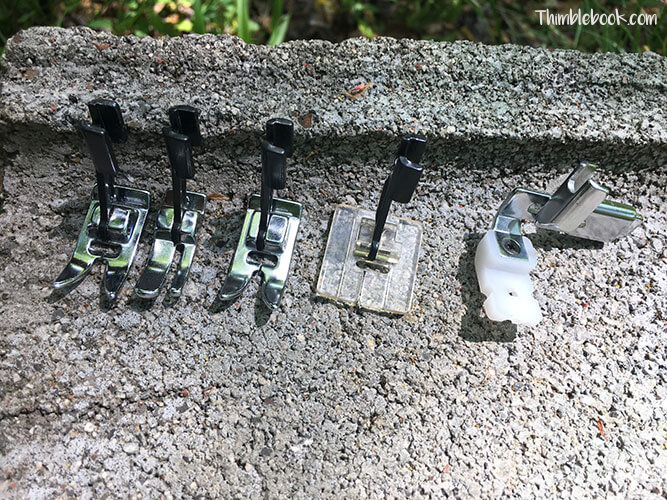
In second place, you’ll pretty easily find Kenmore replacement parts.
The only downside to searching for Kenmore parts comes when you start looking for presser feet. Many Kenmore machines take standard low shank presser feet. But, the lovely super high shank Kenmore machines have very hard to find presser feet. As a result, many super high shank users convert their machines to low shank (which isn’t very favorable).

Machines from brands like Bernina, Elna, Viking, Necchi, and Pfaff have parts that are harder to find.
However, Bernina seems to have the most readily available parts out of these brands.
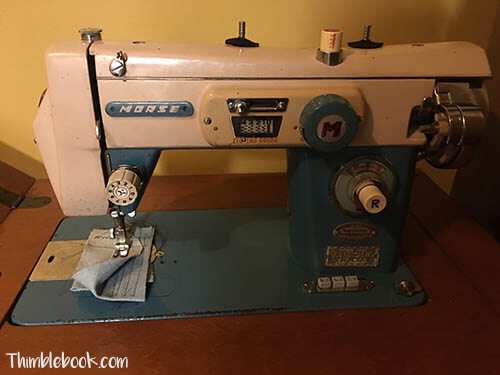
For those of you looking at vintage machines outside of the major brands listed above, please note 80% of “off brand” (Japanese class 15) vintage machines take singer class 15 parts.
This is very good! However, you must understand it isn’t easy to determine which class 15 parts will fit. For example, I had to try out two different Singer class 15 needle plates to find the correct fit for my Emdeko JA21. If trail and error isn’t a problem for you, don’t hesitate to purchase one these gems. Here are a few brands you may or may not recognize that fall into the Japanese class 15 category:
- Brother
- White
- Riccar
- Emdeko
- Dress Maker
- Janome
- Universal
- JCPenny
- Koyo
- Montgomery Ward
- Wizard
2) Zero to minimal plastic or nylon gears
Plastic and nylon parts wear out and must be replaced after years of use. Unfortunately, those parts are not always available 50+ years later. While plastic parts are often described as an advantage, they are ALWAYS a disadvantage in terms of longevity. Plastic sewing machine parts make machines lighter weight, but that is about it. It’s just common sense.
Plastic = Cheap
Metal = Sturdy
Vintage Singer sewing machines aren’t always free of plastic & nylon gears!!!
Therefore, you must check online forums to make sure your machine has metal gears inside. Below, I have listed a few metal gear models.
- Singer 66
- Singer 15
- Singer 27
- Featherweight 221 & 221K
- Singer 185J
- Touch & Sew 600/603/626 *Some 626’s aren’t all metal so you have to look inside.
- Fashion Mate 237
Also, Kenmore sewing machines made after 1977 (except for the older Lady Kenmore) have plastic inside.
When you find a Kenmore, look up the model number online to find the production year.
3) Standard bobbins
The best vintage sewing machines to buy have a basic class 15 bobbin case and bobbin. Sewing buffs stay away from sewing machine models like the Singer Touch and Sew because those machines take a bobbin that is hard to find.
The Singer Touch and Sew bobbin is not only hard to find, but also very small in comparison to a standard bobbin. As a result, users often complain about the bobbin winding mechanism and hate having to change the bottom thread so much.
4) A rust-free surface
Make sure your paint hasn’t been replaced with rust. Rust means your sewing machine is headed toward a state of decomposition. Surface rust can be dealt with. Deep rust, however, means you’ll be better off looking for a sewing machine elsewhere.
In addition to recognizing the above mentioned requirements, you’ll also need to consider what features are needed for the kind of sewing you’ll be doing.
For garment making you need:
- Straight & Zigzag
- A needle plate suitable for working with lightweight materials
- Nice buttonhole Stitch(s)
With Embroidery, you’ll need:
- Feed Dog Drop
- Extra nice straight stitch
- Zigzag for Satin stitching
Interested in Quilting? Search for a machine with a:
- Larger Harp Area
- Feed Dog Drop
- Extra strength for piercing multiple layers
For Bag Making you’ll need:
- Extra piercing power
- Longer Stitch Length for top stitching
- Great Straight Stitch
Here are the best vintage sewing machines to buy based on the above-mentioned criteria.
Other sewing machine will be added to the list as I find them. For now, this is what I have.
Garment Making
| Singer | Kenmore | Bernina | Elna | Viking | Pfaff | Other |
| 401A | 158.1941 | 930 | ||||
| 158.1050 | 1010 | |||||
Quilting
| Singer | Kenmore | Bernina | Elna | Viking | Pfaff | Other |
| 201/201K | ||||||
| 15 | ||||||
| 221/221K | ||||||
| 301A |
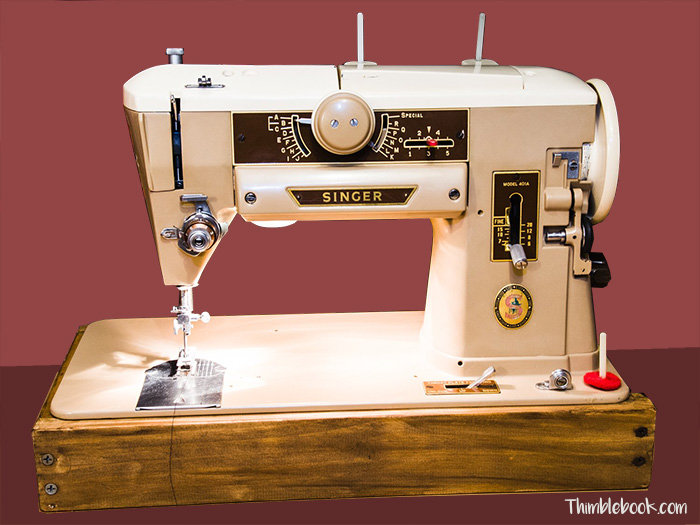
Embroidery
| Singer | Kenmore | Bernina | Elna | Viking | Pfaff | Other |
| 401A | 158.1914 | |||||
|
| ||||||
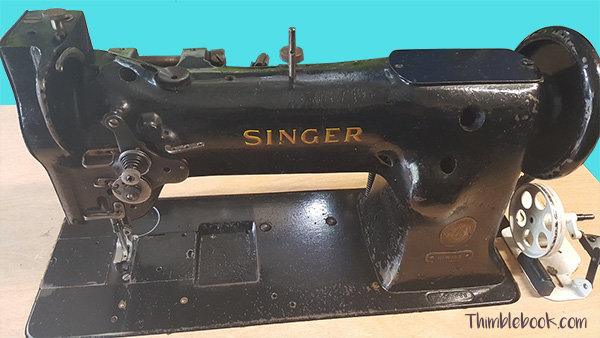
Bag Making
| Singer | Kenmore | Bernina | Elna | Viking | Pfaff | Other |
| 111w155 | ||||||
| 78-1 | ||||||
| 78-3 | ||||||
|
|
Do you all have any other sewing machines that you believe should have made the list?
I’d love to hear about it in the comments section below 🙂
Originally posted April 2018 & Last Updated September 2022
Other Helpful Articles:
Check Out Morse Fotomatic 4100 Zig Zag Sewing Machine
My Craigslist Bernina 1010: Restoration to Review
Kenmore 158.1941: Parts List + Everything You Need to Know
23 Comments
Leave a response

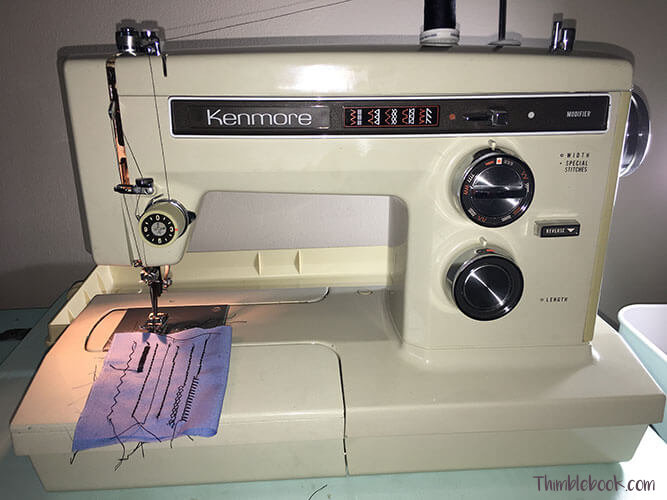
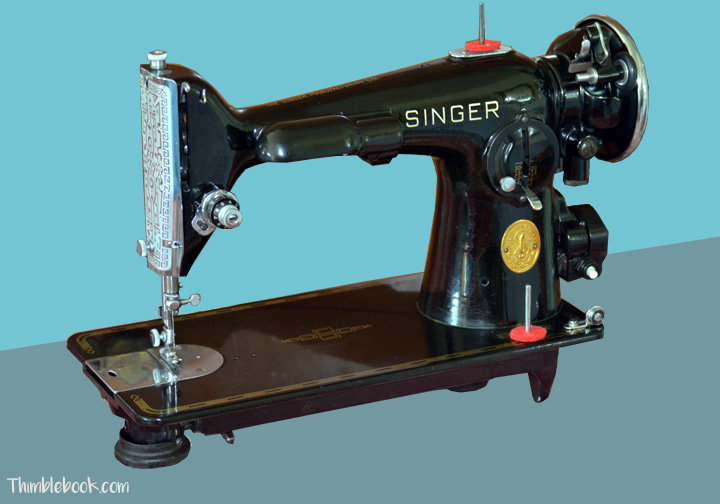
I own Brothers 210 which seems to be the same.
Cool
Great article for those looking to buy their first good vintage machine. Myself, I love vintage Kenmores and have several. I’d venture to say that almost any German or Japanese-built “Kennie” with a forward facing bobbin would be a good buy, and probably work well with double needles. Interestingly though, they do have their little idiosyncrasies. My 158-14001 (forward bobbin) HATES double needles, but does gathering better than any of my modern OR other vintage machines. My 1970’s 158-1880, (also front bobbin) likes to get fussy when I try using doubles. However, my cute little 3/4 size 158-10400 just LOVES double needles and does a fabulous job sewing knits because of it. So go figure!
Awesome. I love Kenmore sewing machines too. You can never go wrong with one!
I have a Morse and love it.
Have a 1959 Atlas. Looking for a zig zag for kites and such. Heard to stay away from the ones with the plastic cams. Which Morse machines do not have a plastic cam?
Most sewing machines, prior to the 1970’s have all metal gears. For Singer sewing machines, however, every machine that isn’t black or brown has plastic gears (except for Singer 626). Honestly, I would recommend going for a new or used Sailrite for sewing your kites. Even one of the cheaper knockoff brands would do. It will cost more upfront. But, it will save you money in the long-run to just go ahead and get the most appropriate machine for the job.
Thanks. Problem with the sailrites is that they are not cheap, Even used. Industrial is what i really need. Making a WW2 style navy Hammock. had to sew it with a sewing awl. Great website
Thanks. Yes, I understand they are pricey. Check FB marketplace and Craigslist for used walking foot machines. Many times, you can find some reasonable deals. Even with having a machine serviced, you’d still come out way cheaper than buying new. Stay blessed 🙂
i have a necchi bcj that needs a #32 lead cord. i cant find it online. do you know where i can get one? also i want to buy a pfaff but the power socket is fixed with epoxy. is it safe? thank you for your advise.
For the Pfaff, it would be best to just cut off the old power socket. Then, trim back insulation 1/2 inch on the cord. Get a light outlet cord from your local hardware store (of matching size) and trim back the insulation on it too. Just twist the wiring together and cover it all up with an electrical wiring insulation tube and electrical tape. It will be much safer and work better than those old plugs. See if this link will work for the #32 lead cord. https://www.etsy.com/listing/202626187/double-lead-power-cord-32-necchi-pfaff?gpla=1&gao=1&&utm_source=google&utm_medium=cpc&utm_campaign=shopping_us_a-craft_supplies_and_tools-tools_and_equipment-parts-tool_parts_and_accessories-sewing_machine_parts&utm_custom1=_k_Cj0KCQjw38-DBhDpARIsADJ3kjlzvvWcKqxLtYqP8-P_pWi-RuX3m4m8FgwacWiqDGNVDic_X7iyWYkaAnk5EALw_wcB_k_&utm_content=go_12573075997_120353199820_507851685109_pla-323180136175_c__202626187_123284588&utm_custom2=12573075997&gclid=Cj0KCQjw38-DBhDpARIsADJ3kjlzvvWcKqxLtYqP8-P_pWi-RuX3m4m8FgwacWiqDGNVDic_X7iyWYkaAnk5EALw_wcB
Not completely true on the vintage singers. The 600, 603, 604 models also have metal gears. I have a 600 and pass a 603e to my daughter, both had metal gears and run beautifuly.
I should have made it more clear that all models were not listed. Thanks for bringing this to my attention. You’ve got some great sewing machines 🙂
Not that it’s completely germane to this discussion, but out of many companies selling machines “way back then”, Sears was pretty much the last holdout to make all-metal machines. They finally began adding plastic in the late 70’s when the bottom line was shrinking and it was just too expensive to produce all-metal anymore. So, the last of the 158 series models were built partially with plastic. Even so, those machines were still pretty darn good, I own a couple and they’re splendid. And for non-electronic devices, they have some decent features too. Then Sears moved their manufacturing to Taiwan and the 385 series was born; I wouldn’t touch a 385, they just aren’t the same as they fall into the planned obsolesence category (in my poor opinion anyway).
Dear Thimble:
I have an Emdeko Mark IV and am looking for a walking foot. Please help!
Thanks so much for your time in answering and for imparting such great knowledge regarding vintage machines. I love my Emdeko and am not going to give up on her!
You’ve got a very cool looking sewing machine 🙂 From photos, it looks like your machine is a low shank. Am I correct? If so, a standard Singer low shank walking foot will fit. Thanks for visiting the blog.
Excellent article! Thanks
The Singer 626 may or may not have metal gears, this is the model where they switched over and some did have nylon gears. The only T&S machines that definitely had metal gears are the early ones – 600/603. The bobbins for those machines aren’t hard to find at all. They can be a pain to use, however, but the 600/603 machines are comparable in quality to a Singer 401 (which should make the list of any “best” vintage sewing machines.)
Thanks so much for your input. I will have to update the best vintage sewing machine lists soon.
I may be struck off for leaving another comment (I’ve already left 3 or 4😁)! But this is such an interesting thread that I can’t help myself! I love my Kenmores but I recently found a beautiful black 301A that had been professionally maintained and was pristine. It’s a beauty and works like a dream. Not to long after that, I finally acquired a Singer 201-2, something I’ve wanted for a long time. For an 81-year old machine, it was in reasonable condition but I still had to clean and lubricate it, including the motor. I also had to adjust the timing, something I’d never done before. But it worked out fine as I had some very good help (thank y0u Bob Fowler!) If you like working on your own machines, or just have a small problem, Bob is the BEST! Visit his YouTube channel and you’ll be thrilled how much you can learn! And God bless him, he WILL answer your questions!
Now that I have a 201 and 301, both of which are superb machines, I’m surprised at myself as I like the 301 better. Go figure!
p.s. Mr. Fowler has no idea that I’m mentioning him here.
I just recently bought a Husqvarna Viking Automatic 21A model for sewing leather. From what I’ve heard they have great power having a 1.5 amp motor along with a gear reduction that you can switch on by pulling out the Bobbin winder very cool feature that comes and hand especially with leather. but like you said finding parts for them a little hard which is the downside in my opinion other than that I was just wondering what you thought about that machine. I also would like to ask you what vintage sewing machines would you recommend that would have good power to do leather to work as I am somewhat new to knowing which vintage sewing machines have that kind of piercing power. I hope you are able to receive this email and message me back as I look forward to reading your response,all your knowledge that you’ve learned on these vintage machines helps not only me but I can see a lot of people look to you for information related to sewing. Thank you very much for the time you take to post the info and God bless to you and your family.
Sincerely, John H. 8-2-2023
God bless you and your family as well! Thank you so much for reading the blog and sending this message. Viking 21A is one of the best vintage sewing machines ever made. It just didn’t initially make my list because of how difficult it is to find parts. However, I am going to reconsider my decision and perhaps add it to the list. There are so many great vintage machines that will work for handling leather. However, most of them were not designed to work solely for that specific purpose. Singer 66 ,with a motor conversion to a 1.5 amp motor, is a popular option of sewing leather on a domestic. However Montgomery ward also has a lot of great 1.5amp motor machines that will power thru some thick materials. But mostly, I would recommend just skipping domestic and going straight to a walking foot machine. If space is an issue, I would go with a Sailrite. If you are still wanting a vintage machine, I’d go for Singer 111w155.
what,no love for the 500 and 503?